Discover the history of Dundee’s Caird Hall in this post from Archive Services. In April 1914, Sir James Caird, one of Dundee’s wealthiest jute barons and a noted philanthropist, announced he was prepared to fund a new building to act as a city hall and council chambers at a cost of £100,000. However, this was conditional on the scheme following his design, which was very different to that envisaged by James Thomson, the City Architect.
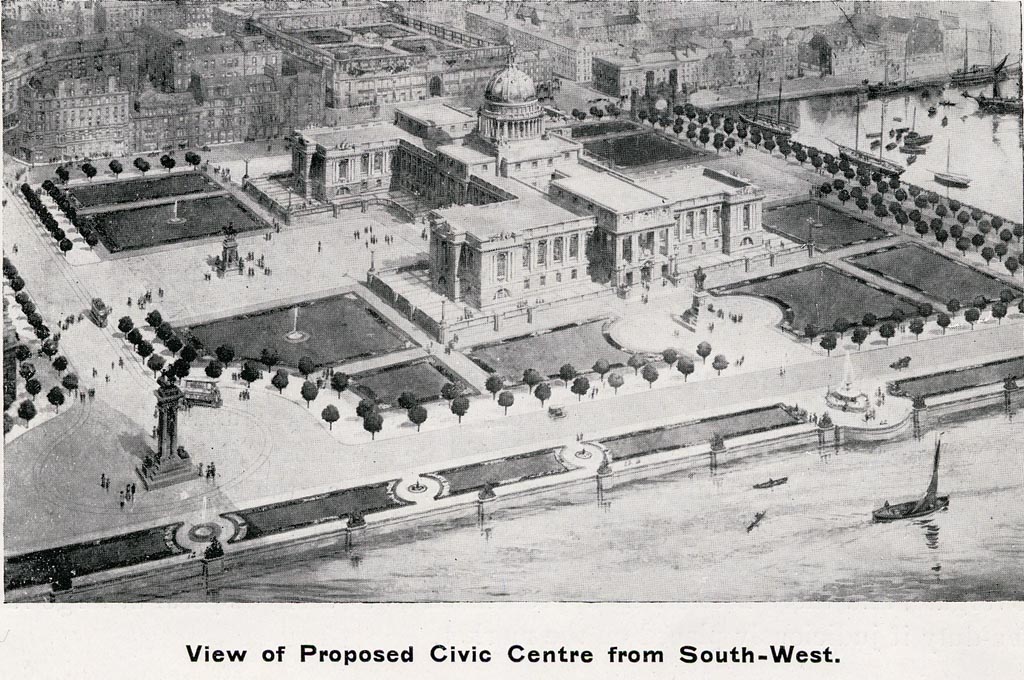
For more on Thomson’s vision for Dundee watch this video from Kenneth in the Archive team.
It was also to be built on a site between the old Town House and the docks, resulting in the clearance of the historic vault and Greenmarket.
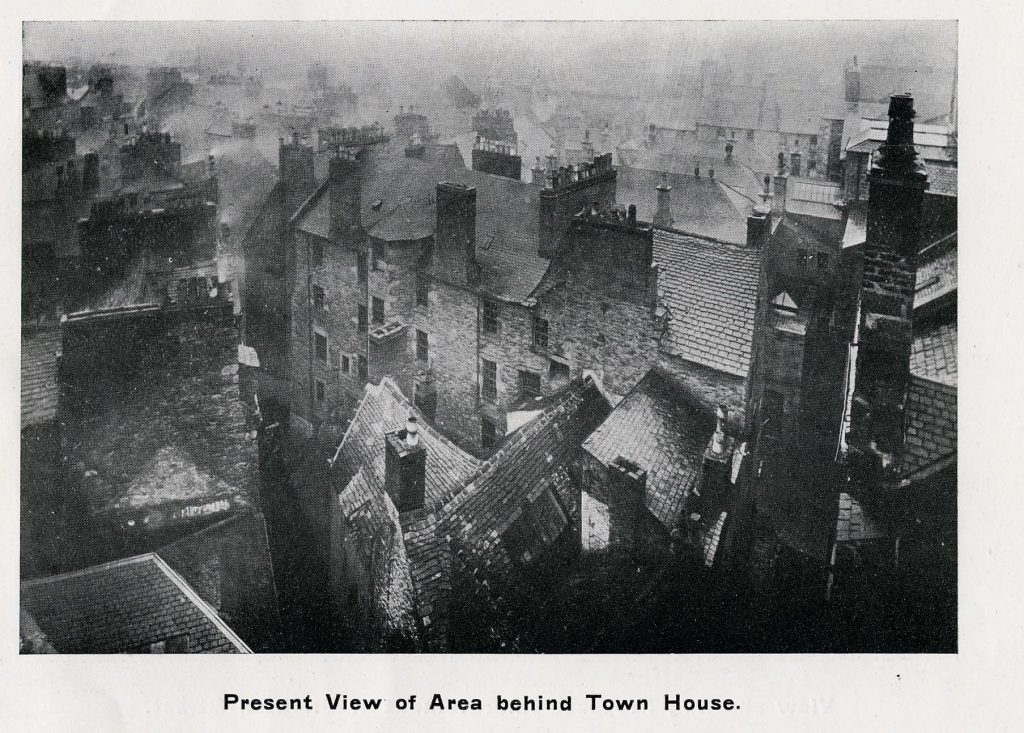
The creation of city square in front of it led to the eventual demolition of the 200-year-old Town House in 1932.
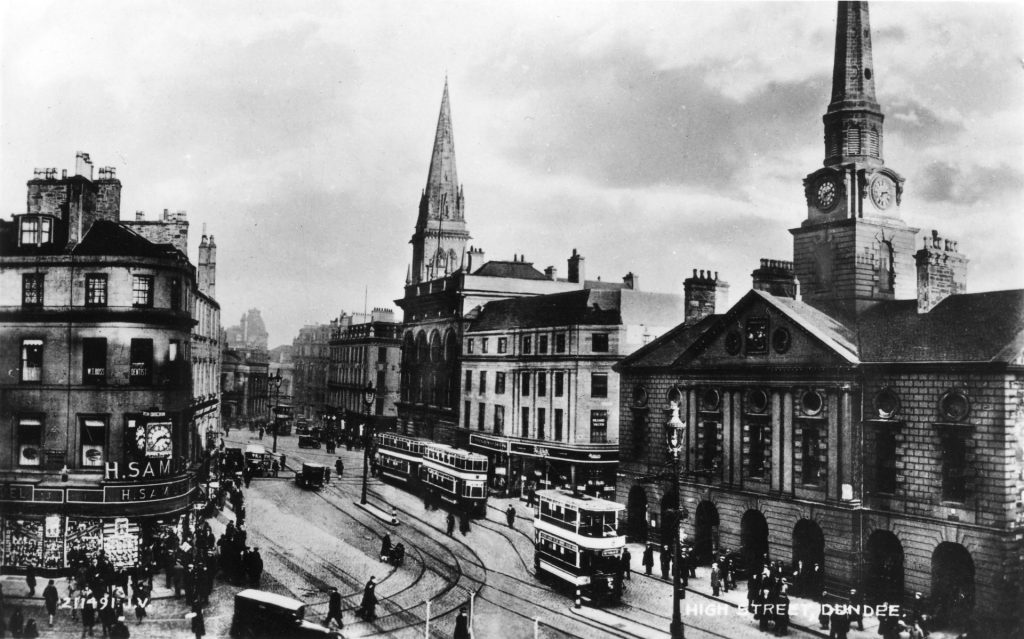
Learn more about the Hight Street and Town House with Kenneth in this video below.
Work started on the Hall in 1914, with the foundation stones being laid on 10th July by king George V and Queen Mary. In a modern twist the laying was done remotely with the King and Queen pressing buttons at Caird’s Ashton Works which sent a signal to lay the stones (which can still be seen today). The button used by the King was made from an emerald which he then gifted to the city and now forms part of the Lord Provost’s chain.
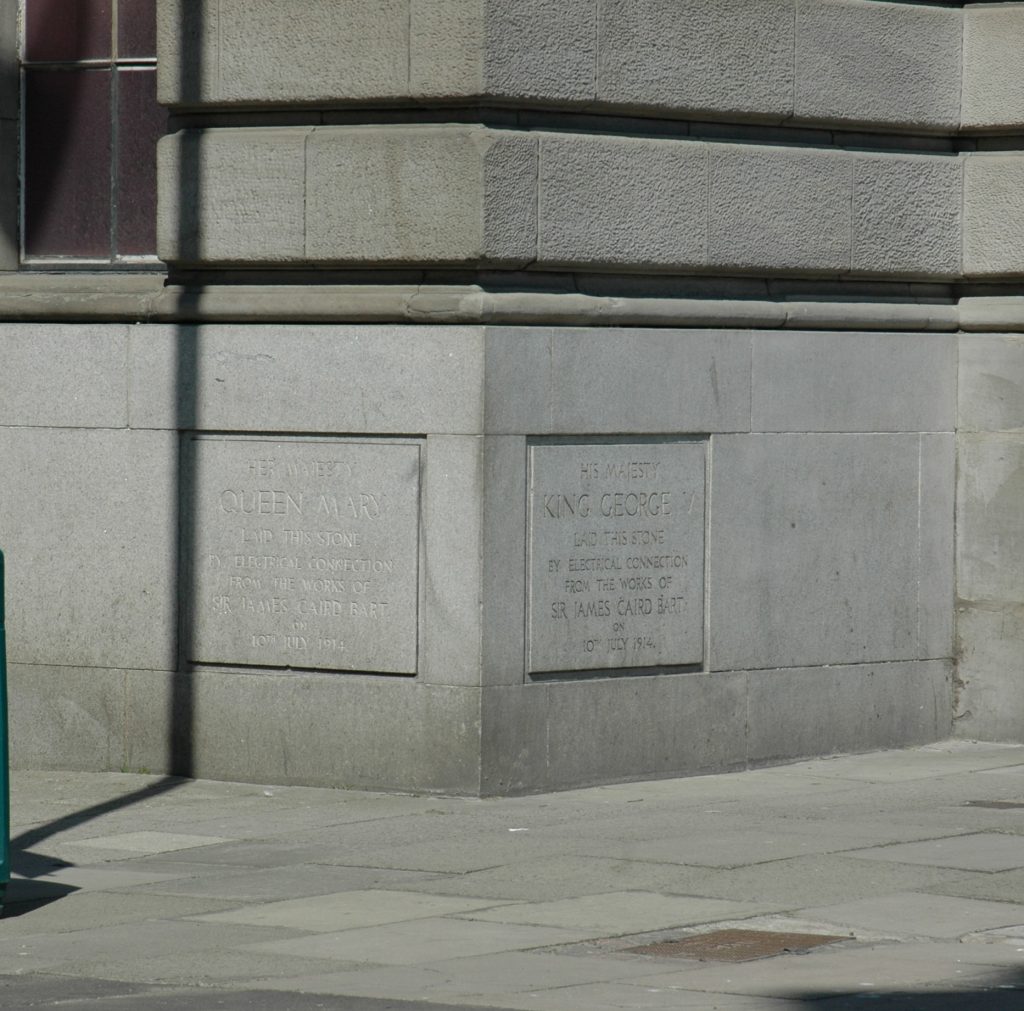
Less than a month after this the Great War started, delaying work on the building. Caird died in 1916 without seeing its completion. Indeed, the official opening by the Prince of Wales (later Edward VIII) would not take place until 26 October 1923. However, parts of it were in use well before then, with the Hall being the location of the count for the 1922 general election which saw Winston Churchill lose his seat in Dundee.
The building served a variety of purposes hosting important events and meetings, including University graduations, serving as an entertainment venue and being used by the Council.
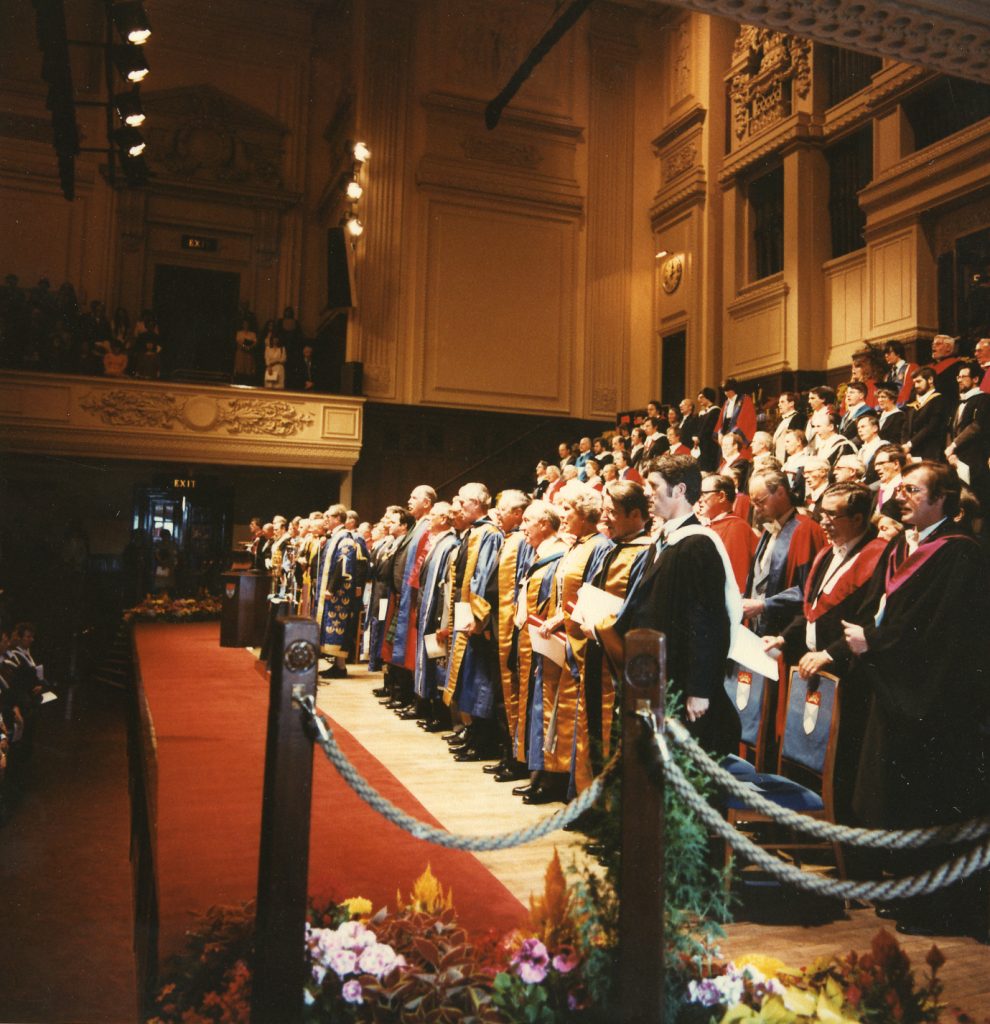
Later the complex would include a shopping arcade and part of the building is now home to Dundee City Archives. However, it did not serve as the main meeting place for the Council for long, with the main council chamber moving to the adjoining City Chambers which opened in 1933.
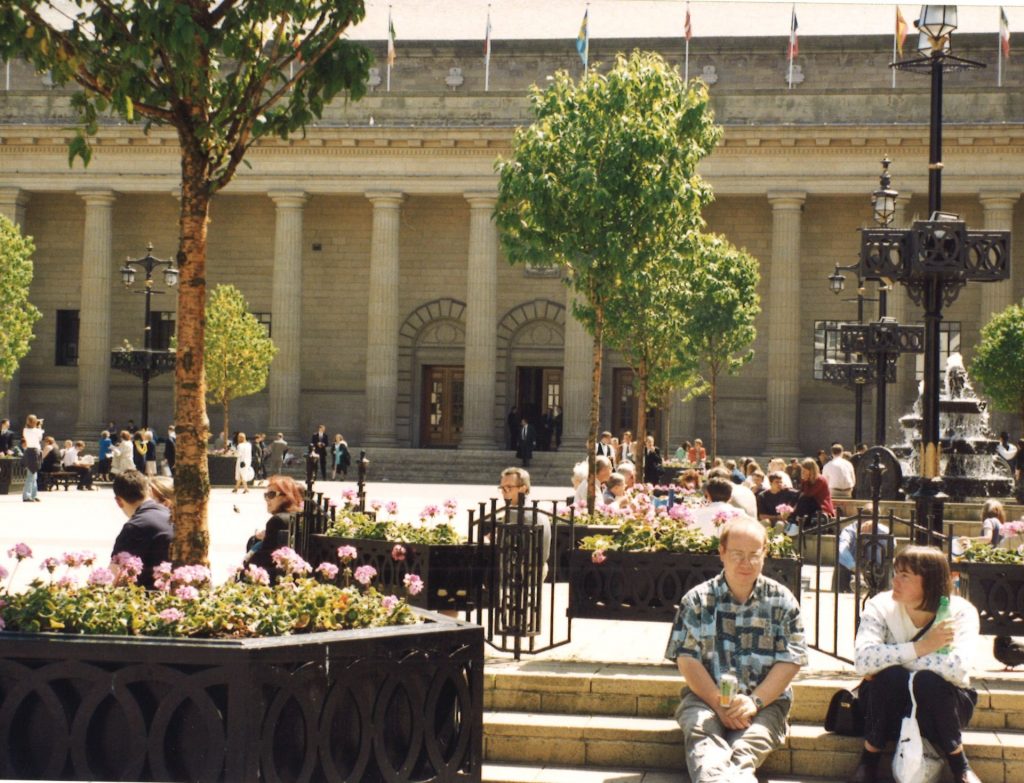
To the south the Caird Hall backed on to the historic harbour of Dundee, making it a prominent building when viewed from the Tay.
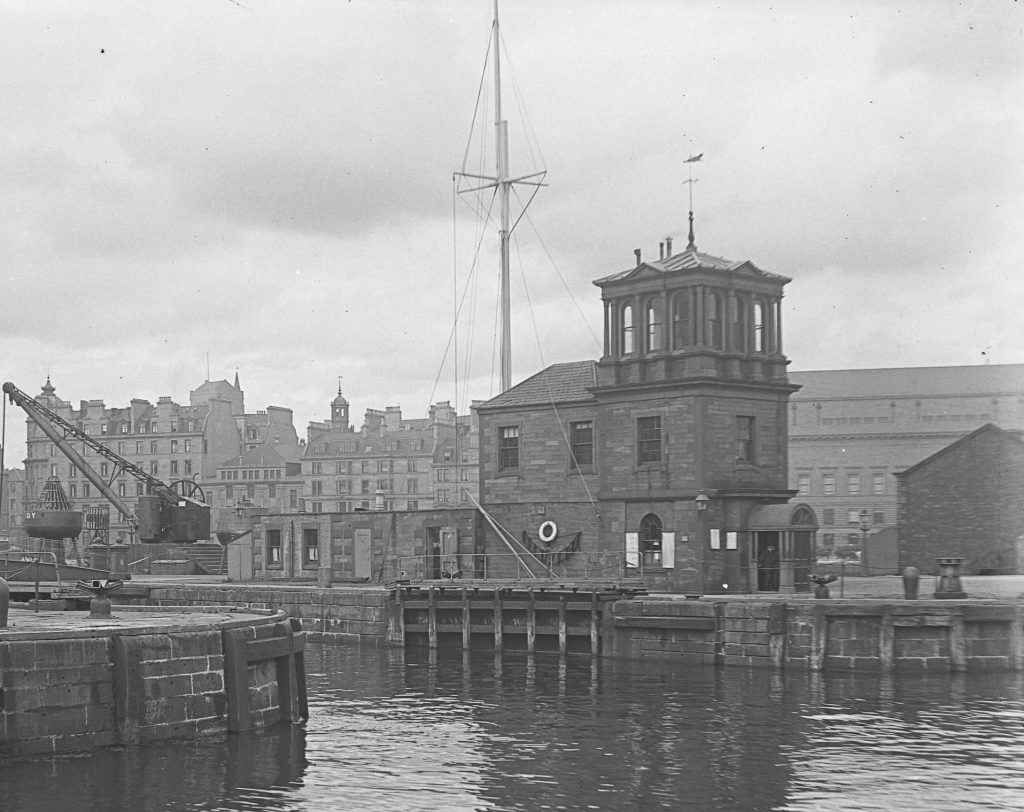
However, the Earl Grey and King William IV docks were filled-in in the 1960s to make way for the Tay Road Bridge which pushed the shoreline away from the Caird Hall. The relationship with the Tay was further changed in the 1970s with the construction of Tayside House and its Podium Block. These were connected to the Caird Hall with a walkway which rather spoiled the view of its rear facade. The demolition of the Podium Block in 2012 removed this walkway, but left a hole in the building which needed to be carefully covered to restore it to its old appearance.
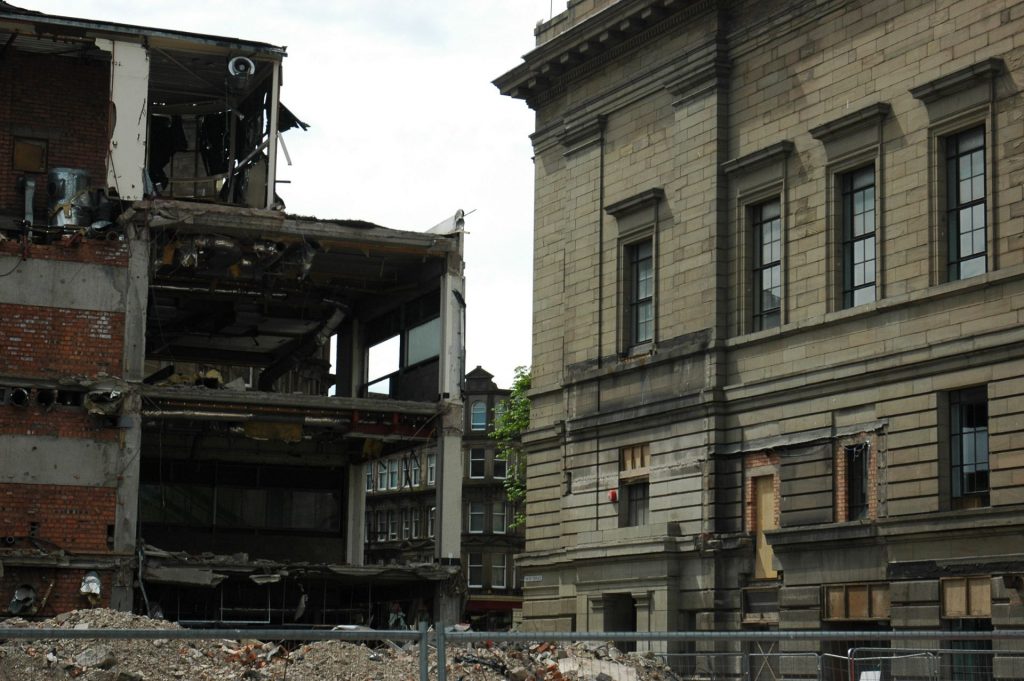
The removal of Tayside House itself in 2013 helped restore the views of the Caird Hall from the waterfront. You can learn more about Dundee’s recent changes to the waterfront in the following video. More blog posts on changes in Dundee can be found by searching this site for Then and now.
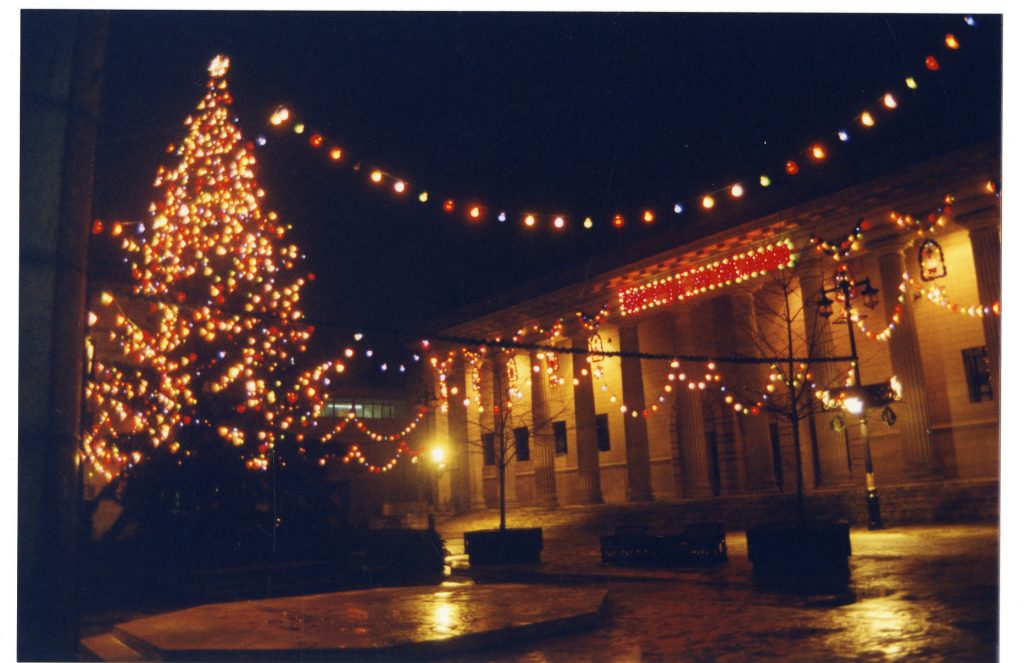
The stone used to build the city square and the law memorial and the mills observatory is from Leoch, just past Bridgefoot outside Dundee. The quarry is long infilled and restored to pasture. It is a peculiar stone having strong antibiotic properties which makes it easier to keep clean than stone from elsewhere.
Fascinating! Thanks for sharing that.
Do you have a photograph available of the Caird Hall foundation stone being prepared for laying, by William Nichol McMillan, stonemason.
I am sorry I don’t think we do. You could try looking on the British Newspaper Archive website or asking the City Archives if you haven’t done already.